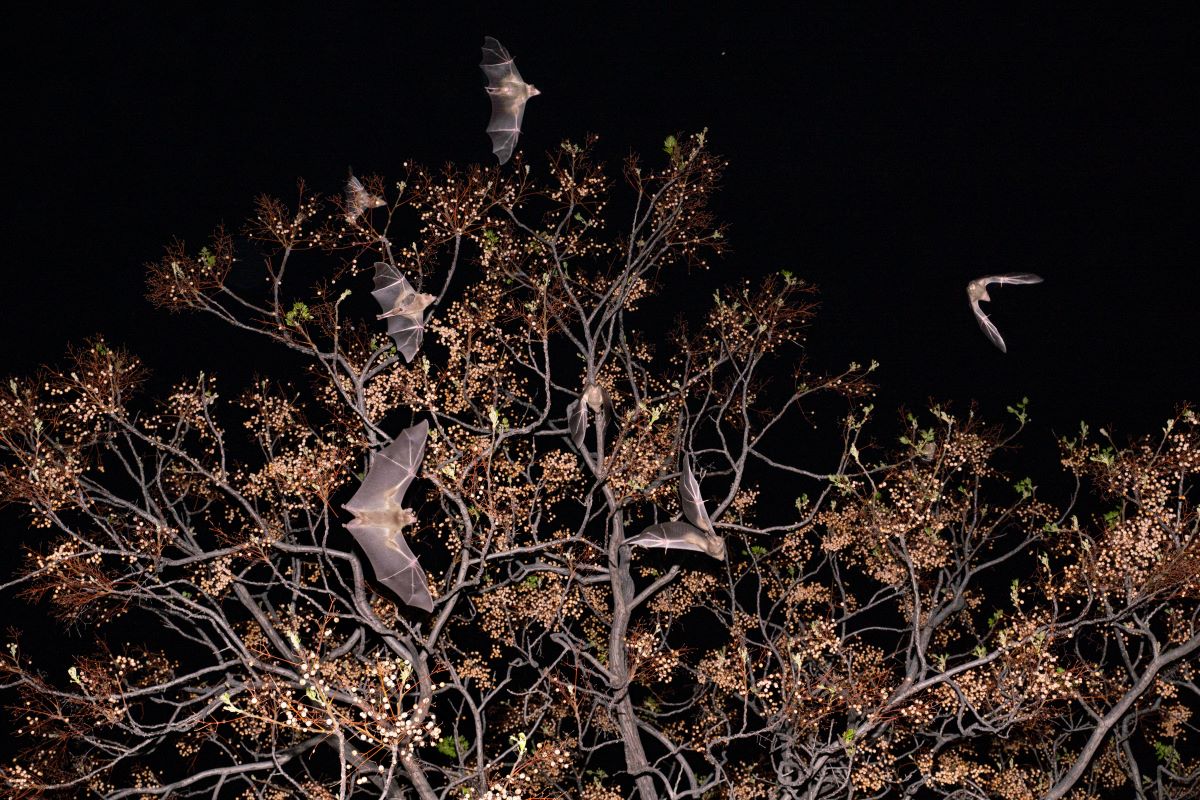To explore this, the HFSP Long-Term Fellowship Awardee Saikat Ray, working with Nachum Ulanovsky, turned to Egyptian fruit bats, which are highly social animals. The team focused on a part of the brain called the hippocampus, which is known for its roles in memory, navigation, and social behavior. They set up a specially designed ‘cave’ in the lab where small mixed-sex groups of wild bats could live together for months, behaving freely without imposed experiments or tasks. As the bats interacted, flew, and rested, researchers recorded their brain activity wirelessly, while also tracking their location, direction of movement, and interactions with each other.

What they discovered was remarkable. The bats naturally formed a stable social network and spent their time flying between two roosting nets, socializing, and observing one another. Brain cells called "place cells," which typically map the bat’s own location, were also influenced by social context, such as whether the bat was flying alone or toward another bat. Even more striking, many neurons could tell who the other bats were, regardless of where they were or what they were doing. Some neurons specialize in recognizing different types of social behavior, like friendly grooming or aggressive encounters. Others combined information about the bat’s own position and movements with those of other bats, painting a rich picture of the social world around them.
These findings show that the hippocampus doesn’t just keep track of places or memories. It builds a sophisticated map that blends social and spatial information. It tracks not only where the bat is, but who else is around, what they’re doing, and how they relate socially. This challenges the traditional view of the hippocampus as simply a memory or navigation center. Instead, it suggests the brain creates an integrated "socio-spatial" map that supports natural, real-world social behavior.
In short, by studying bats living and interacting naturally, the researchers uncovered how the brain can combine memories, spatial awareness, and social understanding all at once. This kind of integrated neural coding may be key to how complex social animals—like bats, and perhaps humans—navigate their social worlds every day.


































